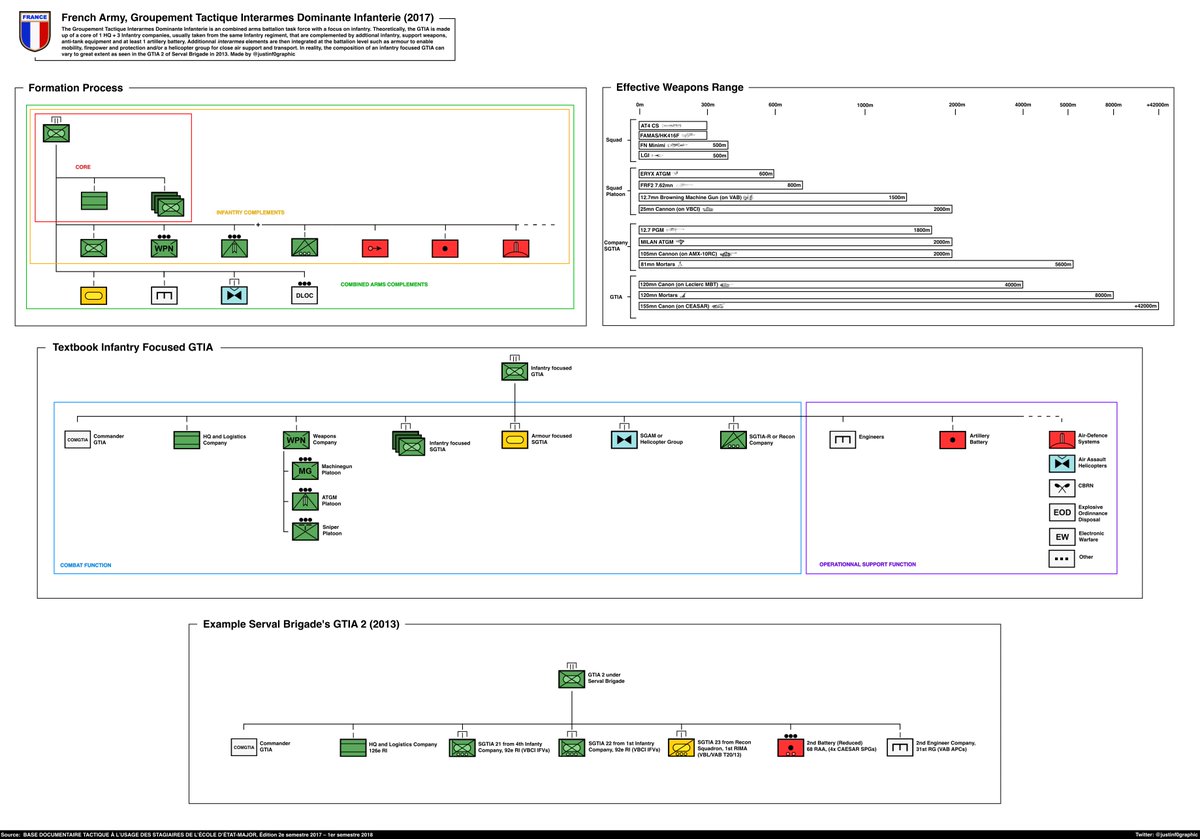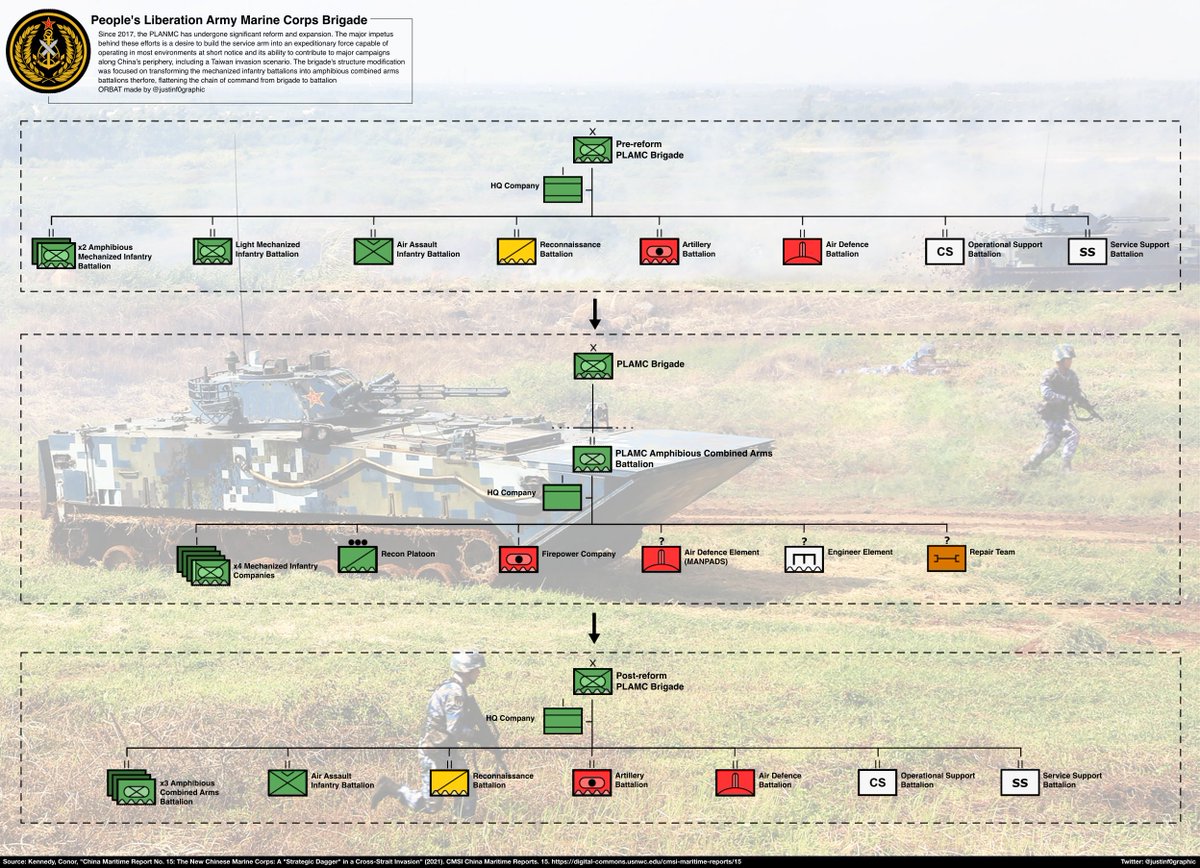ORBAT of the People’s Liberation Army Air Force (PLAAF) Air Brigades. A 🧵
#PLAAF #PLA #ArmyAviation #China #Military #militaryhistory #fighteraircraft
#PLAAF #PLA #ArmyAviation #China #Military #militaryhistory #fighteraircraft

1. The PLAAF reformed the command structure of its air formations in the late 2000s/early 2010s. It moved from a division-based to a brigade-based formation, essentially reducing the weight of the command structure by deleting one command level 

2. In effect, the command structure changed from having a 7-tier (PLAAF HQ –MRAF HQ – command post – air division – air regiment – flight group – flight squadron) to a 6-tiered one (PLAAF HQ – Military Region Air Force HQ – Base – air brigade – flight group – flight squadron) 

3. This change has primarily affected its fighter and fighter-bomber formations. The PLAAF kept its three bombers, three transport and three special mission aircraft in divisions. 

4. For the structure of the brigade itself, it operates between 2 and 3 Flight Groups (equivalent to western squadrons) which in turn operate between 2 and 3 Flight Squadrons. The brigades theoretically have between 16 to 30 aircraft 

5. The maintenance group has 4 squadrons including one that acts periodically as the inspection squadron. The maintenance group also has an aircraft repair shop responsible for repairs of the brigade’s aircraft and its spare parts 

6. The airfield station comprises everything that is needed to run a military airfield. Here is a list I took from the @CASI_Research report on the “70 Years of the People's Liberation Army Air Force” 



7. Most of the information used was found from these two @CASI publications
airuniversity.af.edu/Portals/10/CAS…
airuniversity.af.edu/Portals/10/CAS…
airuniversity.af.edu/Portals/10/CAS…
airuniversity.af.edu/Portals/10/CAS…
End. Poke: @rdmartinson88 @BonnieGlaser @roderick_s_lee @JohnCulver689 @PLAOpsOSINT @Dr_M_Davis @DerekJGrossman @Stokes2049 @RupprechtDeino @peter_dutton @LyleJMorris @battle_order
• • •
Missing some Tweet in this thread? You can try to
force a refresh




















